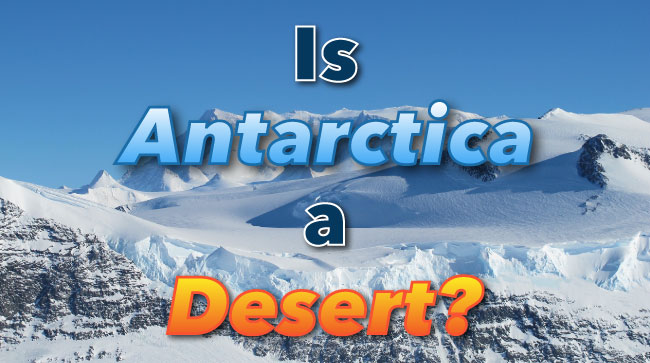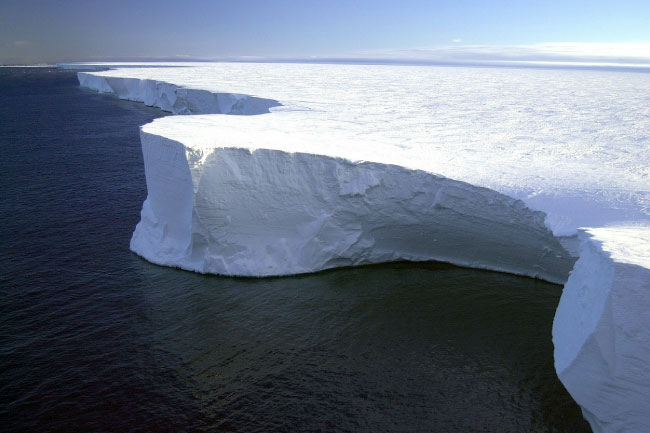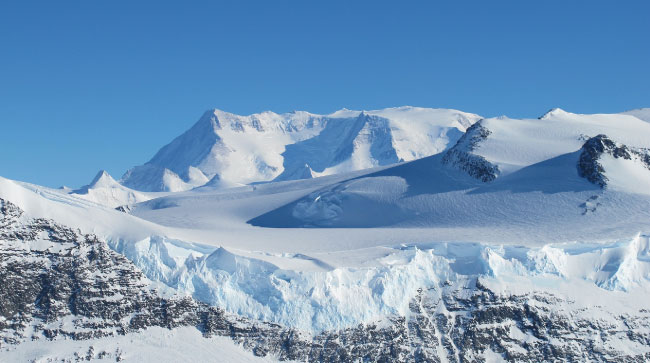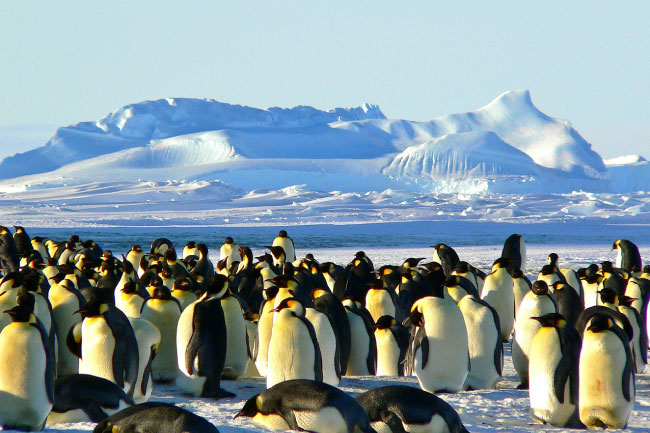On this page, we’ll find out what a desert actually is, and we’ll answer the question ‘Is Antarctica a desert?’
When most people picture a desert they see a hot and sandy landscape. They might also see one or two palm trees dotted around, and a man dressed in white riding a camel ...
… or maybe we’ve been watching too many films! (In fact, only about 20% of the world’s desert is covered in sand.)
As you’ll know if you’ve read our Antarctica Facts page, Antarctica is the coldest continent on Earth. How could it possibly be a desert? Read on to find out …
Is Antarctica A Desert? Yes!
The quick answer is yes, Antarctica is a desert due to its low rainfall. Rainfall (or, strictly speaking, precipitation, which includes snow, mist and fog) is the main factor in defining a desert.
Because very little rain falls in Antarctica, the continent can be considered to be a desert.
How Much Snow (or Rain) Falls In Antarctica?
Antarctica has very little precipitation. Only around 20 cm (7.87 in) of snow – or other precipitation – falls along the coast each year. Inland the figure is far lower.
Is Antarctica A Desert? What Is A Desert?
There are many definitions of what makes a region a desert. Most simply state that a desert is a region with very little precipitation.
In general, this means an average of less than 25 cm (10 in) of rain each year. However, some definitions require there to be even less, requiring an area to have under 20 cm (7.87 in) of rain each year for it to be considered a desert.
There are also different types of desert. These include hot deserts, cold deserts (which doesn't always mean deserts like Antarctica), arid deserts and coastal deserts .
Some definitions of a desert require that an area is hot, as well as dry. By these definitions, Antarctica isn’t a desert; as we’ve seen, it’s the Earth’s coldest continent! In general, however, it’s an area’s precipitation that defines whether or not it’s a desert.
Polar Deserts
One particular type of desert is a ‘polar desert’. A polar desert is an area that has precipitation of less than 25 cm (9.84 in) each year, and an average temperature of under 10 °C during its warmest month.
The Earth’s polar deserts cover almost 5,000,000 km² (1,930,500 mi²). Much of the interior of Antarctica is a polar desert.
Desert Landscape
Whichever strict definition you follow, a desert is a dry – or arid – place. Few plants grow in deserts, and the animals that live in these regions often have special adaptations to cope with the harsh climate.
With little or no vegetation, deserts are left unprotected from the winds (and ice in Antarctica), leaving large, featureless expanses of land.
Deserts cover around a third of the Earth’s land surface.
Antarctica Is The World’s Biggest Desert!
As you can see from the list below, Antarctica is the world’s biggest desert. Antarctica is bigger than the Arctic, and significantly bigger than the world’s largest hot desert, the Sahara Desert in Africa.
The World’s Five Biggest Deserts
- Antarctic Desert Area: 14,200,000 km² (5,500,000 mi²)
- Arctic Desert Area: 13,900,000 km² (5,400,000 mi²)
- Sahara Desert Area: 9,100,000 km² (3,500,000 mi²)
- Arabian Desert Area: 2,600,000 km² (1,000,000 mi²)
- Gobi Desert Area: 1,300,000 km² (500,000 mi²)
Is Antarctica A Desert? Conclusion
Is Antarctica a Desert? Yes, by most definitions Antarctica is a desert. In fact it’s the world’s largest desert, covering around 5 ½ million square miles!
Find out more about the amazing continent of Antarctica on these pages:
- Learn more about Antarctica here: Antarctica Facts
- Discover Antarctica’s incredible animals here: Antarctic Animals
… or visit the frozen north: Arctic Facts





